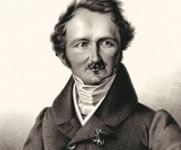Different Styles & Periods
- In the beginning was the castle
- A declaration of love to antiquity
- From Renaissance to Romanticism
- Baroque centre of culture and enlightenment
- Baroque magnificence
- Baroque gardens in the north
- Palatine baroque and Francophile elegance
- Late-baroque treasure troves
- Baroque to Biedermeier in Berlin and Brandenburg
- The Golden Age of Classicism
- Jewels of historicism
- Neo-Gothic romanticism
Jewels of historicism
Historicism was a 19th century artistic direction which drew inspiration from and imitated a range of historical styles. Unlike classicism, it did not only seek to copy the architecture of Greek and Roman classical antiquity, it also borrowed architectural forms from other eras, all of which were recognised as having equal value. Romanticism was also very influential and helped to develop a sense of the historically determined.
Schwerin Castle & Park
Show on map »
Granitz Hunting Lodge, Rügen Island
Show on map »
Wernigerode Castle
Show on map »
Travel Planner
Select an option...
Location
- Schwerin Castle & Park
- Granitz Hunting Lodge, Rügen Island
- Wernigerode Castle






